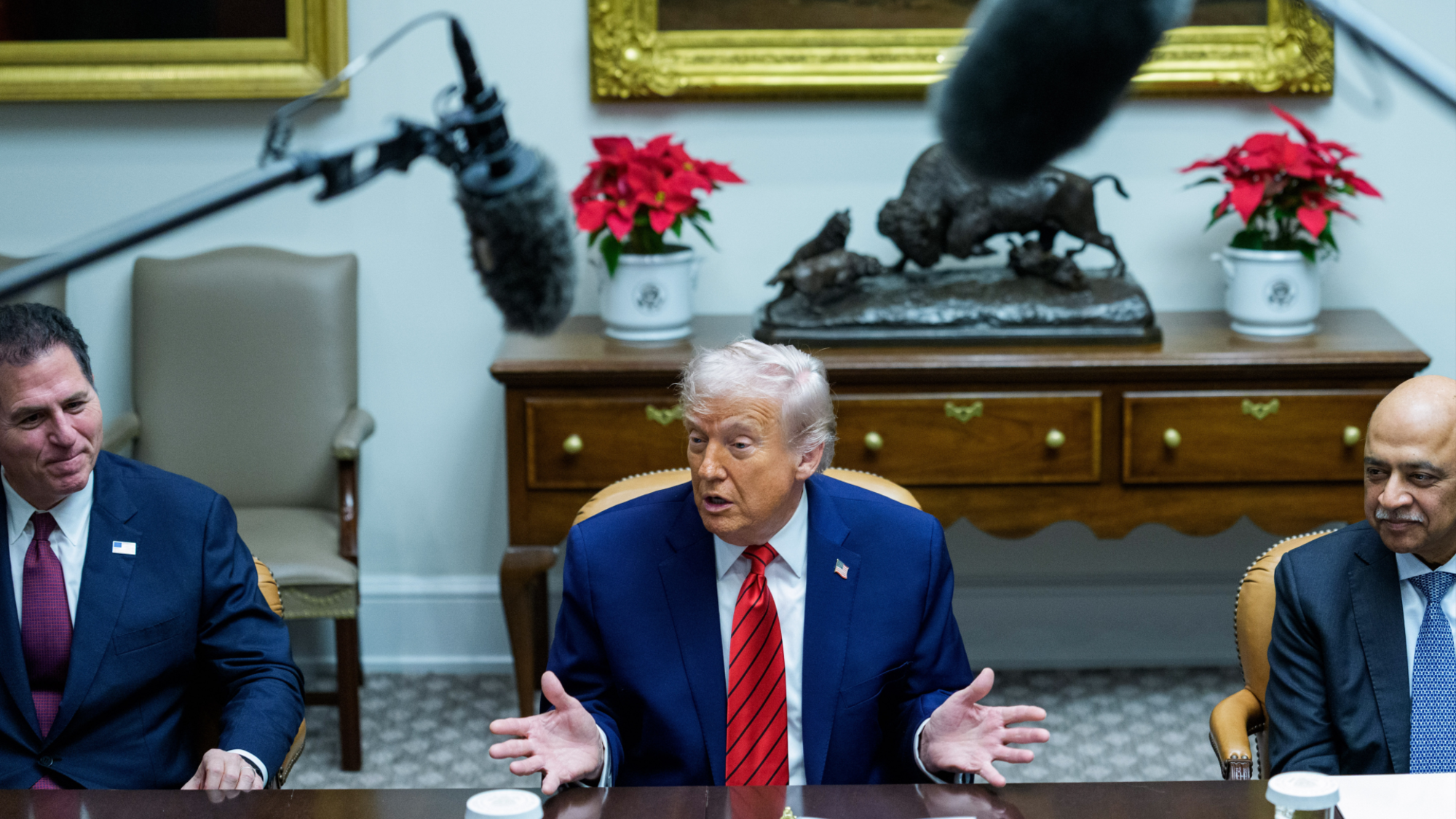The battle over red lines
Obama is focused on the weapon


For the use of force, does the United States really have no firm threshold above which or beyond which Iran cannot cross?
You might think that if you listen to U.S. diplomats try and describe the differences between how the U.S. and Israel view the threat from the regime. Basically, in public, the U.S. says that the red line is the end point: Iran cannot become a nuclear state.
During his United Nations presentation, Israeli Prime Minister Benjamin Netanyahu made it clear that Israel's line starts flashing red when the Iranian nuclear energy program begins to produce uranium-235 isotopes at a rate of 90 percent. Efforts by the U.S. and Israel to sabotage the centrifuges used to separate the isotopes delayed Iran's progress. For a peaceful nuclear energy program, a concentration of between 20 percent and 80 percent of U-235 isotopes is generally preferred. (That's a wide latitude, but the process for producing the stuff, as well as what happens next, is quite complicated.)
The Week
Escape your echo chamber. Get the facts behind the news, plus analysis from multiple perspectives.

Sign up for The Week's Free Newsletters
From our morning news briefing to a weekly Good News Newsletter, get the best of The Week delivered directly to your inbox.
From our morning news briefing to a weekly Good News Newsletter, get the best of The Week delivered directly to your inbox.
Israel says that were Iran's goal only a peaceful one, it would not need to be hurriedly speeding up its uranium enrichment. The U.S. doesn't disagree.
However, the main focus of the U.S. intelligence committee is different.
The U.S. has lasered its intelligence-collecting efforts on the construction of a weapon itself, the construction of a mechanism to either carry it or launch it, and on the intent of Iranian leaders. There are a few reasons for this. One is that the Obama administration does want Iran to be able to have an autonomous nuclear energy program in exchange for verifiably giving up its nuclear weapon ambitions, if they exist. Another is that the U.S. believes that it has a bead on this part of the program.
Through signals intelligence collection, emplaced sensors, human sources, and other methods, the intelligence community believes it will be able to provide enough of a heads up to U.S. policymakers so as to render anything Iran does with its HEU rather irrelevant. This function of intelligence is called "warning." It used to be a specialty of the CIA's, and it is coming back into vogue in counter-proliferation circles. The stuff is almost entirely classified, which is why the U.S. won't discuss it. Here is one example: Recently, according to one intelligence source, the U.S. and Israel exchanged information about a newly discovered 114-foot tower at the foot of the Albroz mountains in northeastern Iran that could be used to launch a missile at Israel.
A free daily email with the biggest news stories of the day – and the best features from TheWeek.com
There are a few political factors to keep in mind when thinking about this debate. One is that Barack Obama is in a strong position to win re-election, which is one reason why Netanyahu felt he had to dramatize his own "red line." If Obama looked weaker, I bet the two heads of state would have indeed met in person in New York.
Another is that Netanyahu's security cabinet, which receives virtually all U.S. intelligence on Iran, is not sold on the wisdom or the feasibility of a pre-emptive attack. As Jeffrey Goldberg has noted, Israelis may not trust Barack Obama, but they tend to not want their prime ministers to needlessly antagonize the United States, as Netanyahu seems to be doing.
One final point. The U.S.'s not-terribly-clear position on red lines has given some conservatives the suspicion that President Obama is secretly okay with the idea of an Iranian nuclear weapon capacity. But that view is short-sighted. In fact, nothing would be worse for Obama's legacy than to leave office having failed to prevent Iran from becoming a nuclear power. Obama, you'll recall, wants to reduce the number of nuclear weapons in the world to zero. Iranian proliferation — though it might (somehow) achieve some more realpolitik balance in the region in the long term — is entirely anathema to the main thrust of Obama's signature foreign policy legacy.
Marc Ambinder is TheWeek.com's editor-at-large. He is the author, with D.B. Grady, of The Command and Deep State: Inside the Government Secrecy Industry. Marc is also a contributing editor for The Atlantic and GQ. Formerly, he served as White House correspondent for National Journal, chief political consultant for CBS News, and politics editor at The Atlantic. Marc is a 2001 graduate of Harvard. He is married to Michael Park, a corporate strategy consultant, and lives in Los Angeles.
-
 What role will Trump play in the battle over Warner Bros. Discovery?
What role will Trump play in the battle over Warner Bros. Discovery?Today’s Big Question Netflix, Paramount battle for the president’s approval
-
 ‘The menu’s other highlights smack of the surreal’
‘The menu’s other highlights smack of the surreal’Instant Opinion Opinion, comment and editorials of the day
-
 Education: More Americans say college isn’t worth it
Education: More Americans say college isn’t worth itfeature College is costly and job prospects are vanishing
-
 Has Zohran Mamdani shown the Democrats how to win again?
Has Zohran Mamdani shown the Democrats how to win again?Today’s Big Question New York City mayoral election touted as victory for left-wing populists but moderate centrist wins elsewhere present more complex path for Democratic Party
-
 Millions turn out for anti-Trump ‘No Kings’ rallies
Millions turn out for anti-Trump ‘No Kings’ ralliesSpeed Read An estimated 7 million people participated, 2 million more than at the first ‘No Kings’ protest in June
-
 Ghislaine Maxwell: angling for a Trump pardon
Ghislaine Maxwell: angling for a Trump pardonTalking Point Convicted sex trafficker's testimony could shed new light on president's links to Jeffrey Epstein
-
 The last words and final moments of 40 presidents
The last words and final moments of 40 presidentsThe Explainer Some are eloquent quotes worthy of the holders of the highest office in the nation, and others... aren't
-
 The JFK files: the truth at last?
The JFK files: the truth at last?In The Spotlight More than 64,000 previously classified documents relating the 1963 assassination of John F. Kennedy have been released by the Trump administration
-
 'Seriously, not literally': how should the world take Donald Trump?
'Seriously, not literally': how should the world take Donald Trump?Today's big question White House rhetoric and reality look likely to become increasingly blurred
-
 Will Trump's 'madman' strategy pay off?
Will Trump's 'madman' strategy pay off?Today's Big Question Incoming US president likes to seem unpredictable but, this time round, world leaders could be wise to his playbook
-
 Democrats vs. Republicans: who are US billionaires backing?
Democrats vs. Republicans: who are US billionaires backing?The Explainer Younger tech titans join 'boys' club throwing money and support' behind President Trump, while older plutocrats quietly rebuke new administration
